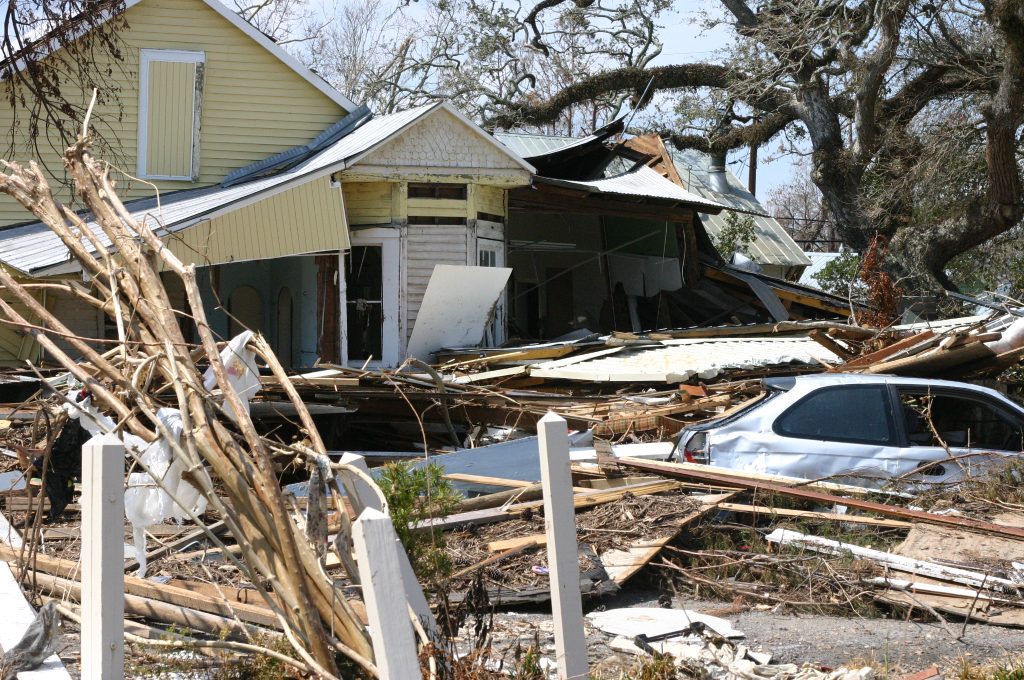Hurricanes Drive Louisiana Insured Losses, Insurer Insolvencies

Max Dorfman, Research Writer, Triple-I
Severe hurricane damage in recent years has led to major losses by writers of Louisiana homeowners’ insurance and to the insolvency of eight insurers.
Louisiana homeowners’ insurers had a combined ratio of 461.9 in 2021. Combined ratio represents the difference between claims and expenses paid and premiums collected by insurers. A combined ratio below 100 represents an underwriting profit, and a ratio above 100 represents a loss.
With earned premium of nearly $2 billion, the 461.9 combined ratio means the industry experienced a $7.2 billion underwriting loss in 2021. As Triple-I Chief Insurance Officer Dale Porfilio puts it, “It would take 24 years of achieving a combined ratio of 85 for homeowners’ insurance writers in Louisiana to return to positive profitability.”
In 2020, Hurricanes Delta, Laura, and Zeta all caused major damage, resulting in a large number of insurance claims. Through September 30, 2021, there were 323,727 insurance claims of all types for these storms. Insurers paid or reserved $9.1 billion for Laura alone. Additionally, Hurricane Ida, which occurred in 2021, generated 460,709 insurance claims of all types through June 30, 2022, with insurers having paid or reserved $13.1 billion for that storm.
Eight Louisiana homeowner insurers already have become insolvent, and at least 12 companies have submitted withdrawal notices to Louisiana’s Department of Insurance, a preliminary measure needed to leave the state. This has forced tens of thousands of homeowners to depend on the state’s insurer of last resort, Louisiana Citizens Property Insurance Corp.
The market is struggling so much that Louisiana Insurance Commissioner Jim Donelon has called the current circumstances a “crisis.”
Next steps
In response, the Louisiana Insurance Guaranty Association (LIGA) has begun to restructure its management of claims for policyholders of insolvent insurers using property estimating technology from Verisk, a global data analytics provider.
“Seamless coordination with independent adjusting firms has become critical as we work to help hurricane victims throughout Louisiana rebuild their homes and return to normal,” said John Wells, executive director of LIGA.
More work to be done
A 2020 Triple-I Consumer poll found that 27 percent of homeowners said they had flood insurance, which indicates a record high. However, this figure is greater than National Flood Insurance Program (NFIP) estimates. As the Triple-I notes, homeowners may not understand what flood coverage is and how it works — specifically, that flood damage is not covered under standard homeowners’ and renters’ insurance policies. Flood coverage is available as a separate policy from the National Flood Insurance Program (NFIP), administered by the Federal Emergency Management Agency (FEMA), and from many private insurers
As storms continue to wreak major damage across vulnerable areas, homeowners and flood insurance are more important than ever. But risk transfer alone is not enough.
“Risk transfer is just one tool in the resilience toolkit,” says Triple-I CEO Sean Kevelighan. “Our understanding of loss trends and expertise in assessing and quantifying risk must be joined at the hip to technology, public policy, finance, and science. We need to partner with communities and businesses at every level to promote a broad resilience mindset focused on pre-emptive mitigation and rapid recovery.”





